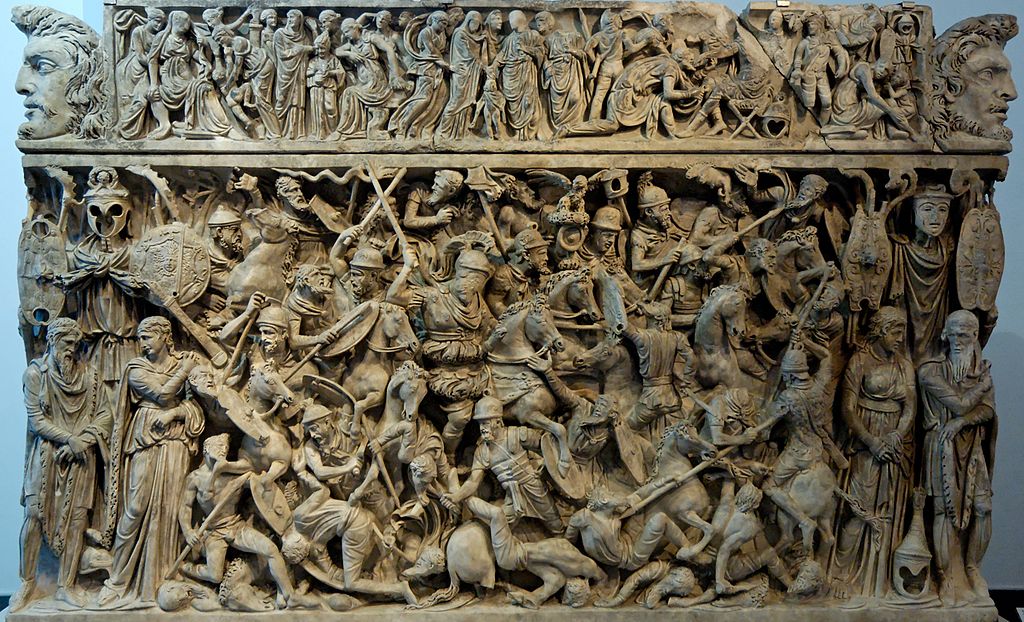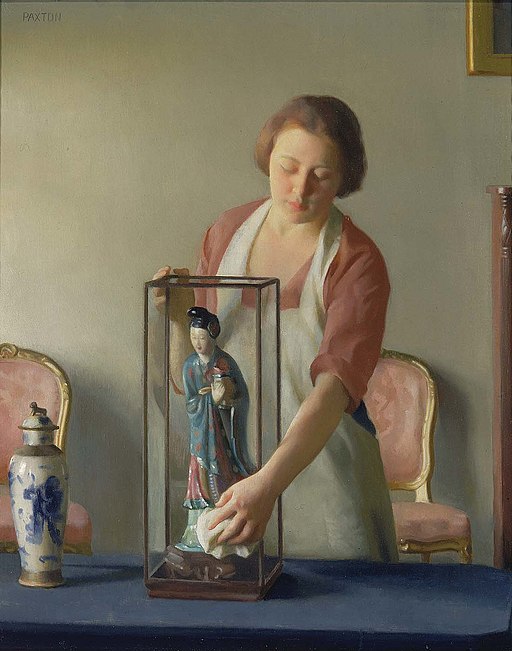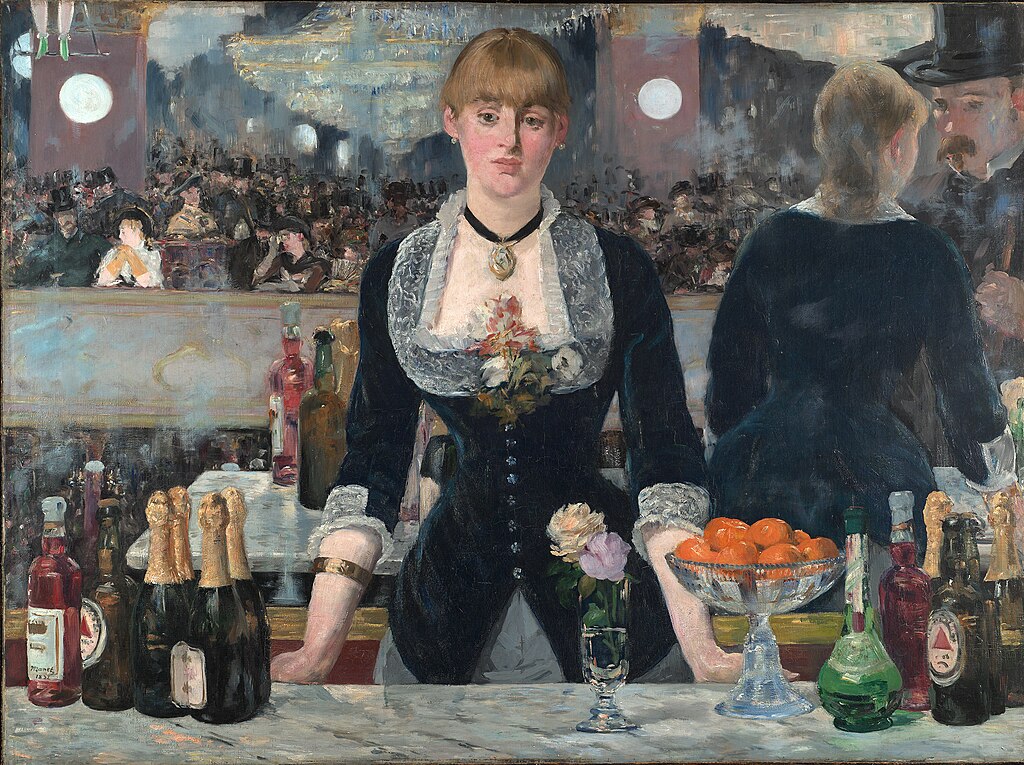
The Parthenon frieze is the high-relief marble sculpture created to adorn the upper part of the Parthenon’s inner chamber of the temple. It was sculpted about 440 BC, and of the 160 m (524 ft) of the original Frieze, about 80 percent survive today.
The rest is known only from the drawings made in 1674 before the Venetian bombardment ruined the temple.
The Frieze depicts the Panathenaic procession of the citizens of Athens to the Acropolis.
In this annual procession at which Athenians and foreigners participated to honor Athena by offering sacrifices and a new peplos, a dress woven by selected noble Athenian girls.
The grand parade shows a thanksgiving sacrifice of cattle and sheep, honey, and water, followed by the victorious army celebrating their victories.
The Parthenon Frieze was created to run around the high exterior walls of the inside structure of the Parthenon. It was carved in marble in situ on the Parthenon.
The marble for the Frieze is called Pentelic marble as it was quarried from Mount Pentelicus and transported 19 km to the Acropolis of Athens.
The Panathenaia procession depicted on the Frieze eventually became part of a more significant festival that also included sporting, poetic, and musical competitions.
Prizes were awarded for the rhapsodic recitation of Homeric poetry, for instrumental music and singing. Also, the Panathenaia Games included a reading of both the Odyssey and the Iliad.
The immediate artistic influence of the Frieze can be found in vase painting and grave stelae where there are echoes of the frieze motifs, themes, and poses.
The impact of the Frieze can also be seen in the Hellenistic art of the Roman era in the sculptured sarcophagus and public building reliefs.
The Panathenaia Ceremony
During the Great Panathenaia, a special robe called the peplos was made by the women of Athens for the statue of Athena. It was then carried to the Parthenon as part of the procession.
There was also the sacrifice of a hundred oxen. Then the meat from the sacrificed animals was used in an enormous banquet on the last night of the festival.
The Panathenaia also included poetic and musical competitions. Prizes were awarded for the rhapsodic recitation of Homeric poetry, for instrumental music and singing.
Also, the Games included a reading of both the Odyssey and the Iliad. Award ceremonies included the presentation of amphorae, which were the large ceramic vessels that contained the oil.
The winner of the chariot race received as a prize one-hundred and forty Panathenaic amphorae full of olive oil.
The competitions were the most prestigious games for the citizens of Athens, but not as important as the Olympic Games or the other Panhellenic Games, which included other Greek city-states.
The Parthenon Frieze: Did you know?
- What is the main difference between what we see today and the original?
- In ancient times all sculptures were vividly painted and were complemented with metal attachments in the form of spears, swords, horse reins, and other accessories.
- What color were Greek statues?
- Most were painted in bright shades of blue, red, yellow, brown, and other hues.
- Why was sculpture important in ancient Greece?
- The Greeks, through their temples, sculpture, and pottery art, incorporated a driving principle of their culture: the importance of excellence or virtue in all human endeavors.
- Who and what is depicted on the Parthenon Frieze?
- Members of the Athenian cavalry with horses and chariots.
- Groups of Important elders
- Musicians
- People escorting sacrificial animals
- Men and women are carrying ceremonial vessels and offerings.
- Priestesses carrying the sacrificial instruments
- The “peplos scene” is at the center with gods, and heroes and women flank it on both sides.
- Twelve seated Olympian Gods, making them more substantial compared to the figures who are standing or riding.
- What is the central theme of the Parthenon Frieze?
- The celebration of the Panathenaea was the folding and presentation of the peplos to the goddess Athena. It was woven during the year by selected virgins exclusively for use during the procession.
- What was the Panathenaia?
- The Great Panathenaia was the largest festival of the city of Athens to honor the Goddess Athena with a new peplos? The celebration took place every four years, lasted 12 days and included sacrifices, as well as athletic and musical contests. The Panathenaic Games lasted from 566 BC to the 3rd century AD.
- What made the Frieze different from any other temple depiction?
- The inclusion and depiction of the ordinary Athenian people in a temple sculpture along with the gods was a statement on the reputation of Athenian citizens.
- When did the Venetian bombardment that ruined the temple?
- 1687
The Parthenon Marbles
- Title: The Parthenon Marbles
- Builder: Phidias
- Built: 442 BC – 438 BC
- Material: Marble
- Origins: Athens, Greece
- Dimensions: H: 1 m; L: 247 ft (75 m) of the original 524 ft (160 m) Frieze
- Museum: The British Museum
The Parthenon Frieze – The Acropolis and The Parthenon
A Tour of the Acropolis of Athens
- Acropolis of Athens
- Acropolis Museum
- National Archaeological Museum
- The Parthenon Marbles
- The Parthenon Frieze
- Metopes of the Parthenon
- Pedimental Sculptures of the Parthenon
- The British Museum
Phidias, Parthenon sculptures
A Tour of Ancient Greece and Rome Collection at the British Library- Marble figure of a Woman – Spedos Type
- The Parthenon Marbles
- The Parthenon Frieze
- Metopes of the Parthenon
- Pedimental Sculptures of the Parthenon
- The Erechtheion Caryatid
- Lion from the Mausoleum at Halicarnassus
- Bust of Pericles
- Aegina Treasure
- Townley Caryatid
- Bronze Statue of a Youth
- Thalia, Muse of Comedy
- Nereid Monument
- Sarcophagus of Seianti Hanunia Tlesnasa
- Lely Venus – Crouching Aphrodite
- Tomb of Payava
- Marble Portrait Bust of the Blind Poet Homer
The Parthenon Frieze
The Parthenon Frieze
Secrets of the Parthenon Frieze
~~~
“There is the sun and daylight in her literature and art.
Homer does not allow us to forget that the sun shone,–nor Phidias,
nor the Parthenon.”
– Henry David Thoreau
~~~
Photo Credits: 1) JOM
Popular this Week








 Sponsor your Favorite Page
Sponsor your Favorite Page SEARCH Search for: Search Follow UsJoin – The JOM Membership Program
Sponsor a Masterpiece with YOUR NAME CHOICE for $5
Share this:
- Tweet
